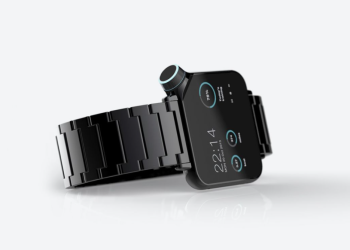Introduction to Warranty Coverage
Warranty coverage is a crucial aspect of purchasing any product, offering assurance and protection against unforeseen defects or malfunctions. However, navigating the complexities of warranty terms can be daunting for many consumers. In this article, we delve into the intricacies of warranty coverage, shedding light on what’s included and what’s not.
Types of Warranties
Warranties come in various forms, each with its own set of terms and conditions. The most common types include manufacturer’s warranties, which are typically included with the purchase of a new product, and extended warranties, which can be purchased separately to extend coverage beyond the manufacturer’s warranty period.
Coverage Inclusions
Manufacturer’s warranties generally cover defects in materials or workmanship for a specified period after purchase. This may include repairs or replacements at no additional cost to the consumer. Additionally, some warranties may offer coverage for specific components or parts of the product.
Common Exclusions
While warranties provide valuable protection, it’s essential to be aware of their limitations. Common exclusions from warranty coverage may include accidental damage, misuse or abuse of the product, normal wear and tear, and unauthorized repairs or modifications.
Manufacturer’s Warranty vs. Extended Warranty
When considering warranty options, consumers often face the dilemma of choosing between a manufacturer’s warranty and an extended warranty. While a manufacturer’s warranty typically comes standard with the product, an extended warranty offers prolonged coverage for an additional fee. However, extended warranties may not always provide added value, as they often duplicate coverage already included in the manufacturer’s warranty.
Reading the Fine Print
One of the most critical aspects of warranty coverage is understanding the fine print. Many consumers overlook this crucial step, only to be surprised when their warranty claims are denied due to technicalities or exclusions buried in the terms and conditions. It’s essential to thoroughly review the warranty documentation to ensure full comprehension of what is and isn’t covered.
Tips for Maximizing Warranty Benefits
To make the most of warranty coverage, there are several proactive steps consumers can take. Registering products promptly after purchase, maintaining proof of purchase, and following recommended maintenance guidelines can all help streamline the warranty claims process and increase the likelihood of a successful outcome.
Filing a Warranty Claim
In the event of a product malfunction or defect, filing a warranty claim is the next course of action. Most warranties require consumers to contact the manufacturer or authorized service provider to initiate the claims process. Providing detailed information about the issue, along with supporting documentation, can expedite the resolution process.
Case Studies
Real-life examples can provide valuable insights into the complexities of warranty coverage. From denied claims due to lack of proper documentation to successful resolutions through persistent advocacy, case studies illustrate the importance of understanding warranty terms and taking proactive measures to protect consumer rights.
The Role of Customer Service
Customer service plays a pivotal role in the warranty claims process. Responsive and knowledgeable support staff can provide guidance and assistance throughout the claims process, helping consumers navigate any challenges or obstacles they may encounter.
Renewing or Extending Warranty Coverage
For products nearing the end of their warranty period, consumers may have the option to renew or extend coverage for an additional fee. While this can provide added peace of mind, it’s essential to weigh the cost against the potential benefits to determine if it’s a worthwhile investment.
Cost vs. Benefit Analysis
Before purchasing an extended warranty or renewing existing coverage, it’s prudent to conduct a cost-benefit analysis. Consider factors such as the likelihood of product failure, the cost of repairs or replacements, and the duration of coverage to determine if the expense outweighs the potential savings.
Understanding Your Rights
Consumers are entitled to certain rights regarding warranties under consumer protection laws. These rights may vary depending on jurisdiction, but generally include provisions for repair, replacement, or refund in the event of a defective product. Familiarizing oneself with these rights can empower consumers to advocate for fair treatment in warranty-related matters.
Common Misconceptions
Misconceptions about warranty coverage abound, leading to confusion and frustration among consumers. From assuming that all damages are covered to believing that warranties are unnecessary for reliable products, debunking these myths is essential for making informed decisions about warranty protection.
Conclusion
Understanding warranty coverage is essential for safeguarding your investments and ensuring peace of mind. By familiarizing yourself with the types of warranties available, reading the fine print, and knowing your rights as a consumer, you can make informed decisions that protect your interests and maximize the benefits of warranty coverage.

FAQs After The Conclusion:
- Can I purchase a warranty after I’ve already bought the product?Some retailers offer extended warranty options that can be purchased after the initial sale, but coverage may be limited compared to warranties purchased at the time of sale.
- Are extended warranties worth the cost?It depends on various factors such as the cost of the warranty, the likelihood of product failure, and the cost of potential repairs or replacements. Consumers should weigh these factors carefully before deciding.
- What should I do if my warranty claim is denied?If your warranty claim is denied, review the warranty documentation to understand the reason for denial. You may be able to appeal the decision or seek assistance from consumer protection agencies.
- Do warranties cover accidental damage?Typically, warranties do not cover accidental damage unless specifically stated otherwise. Consumers may need to purchase separate insurance policies for accidental damage protection.
- Can I transfer a warranty to someone else if I sell the product?Some warranties are transferable, allowing the new owner to benefit from the remaining coverage period. Check the warranty terms or contact the manufacturer for transferability details.
- What is the difference between a warranty and a guarantee?While the terms are often used interchangeably, warranties are legally binding agreements that outline specific terms and conditions of coverage, whereas guarantees are typically informal assurances of product quality or performance.
- Do warranties cover software issues?Manufacturer’s warranties may cover software defects that affect the functionality of the device, but coverage for software issues may vary depending on the warranty terms.
- Can I cancel an extended warranty if I change my mind?Some extended warranties may have a cancellation provision allowing consumers to cancel within a specified period for a full or partial refund. Check the warranty terms for cancellation policies.















